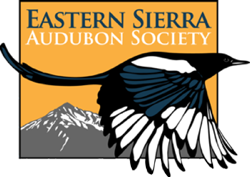Deep Springs Valley Important Bird Area
Text and photos from National Audubon Society IBA Database Site Profile
Deep Springs Valley Site Description
The Deep Springs Valley is located in eastern California just inside the border of Nevada, in a deep valley separating the White and Inyo Mountains. The town of Big Pine, in the Owens Valley, lies about 20 linear miles to the west (over Westgard Pass). Though federal lands (incl. wilderness areas, national forests and Death Valley National Park) surround the valley, this IBA is largely privately held. The two key habitats are the riparian habitat within the campus of Deep Springs College, and alkali meadow/playa habitat of Deep Springs Lake, a few miles to the south. The college includes ancient Fremont Cottonwoods and several small stock ponds rimmed with willow thickets, and the lakebed, though generally dry, becomes soggy with lush grasses after rainy winters. Updated October 2008 by Eastern Sierra Audubon Society
Conservation Issues
None at this time
Ornithological Summary
Deep Springs is best known among birders for its spectacular songbird migration that peaks in spring during late April and May and again in September, with June and September bringing vagrant warblers and vireos from the east. Most of the grassland/meadow species that breed here, especially Northern Harrier and Short-eared Owl, are highly dependent upon rainfall to produce an ample growth of grasses. Snowy Plovers place nests near pools of water around seeps on the bleached playa of Deep Springs Lake. Swainson's Hawks breed in the cottonwoods around the campus, and hunt in the adjacent alfalfa fields. Several rare plants and animals occur here, including the endemic Black Toad (Bufo exul), found nowhere else on earth.
Help us learn more about the birds at this IBA! Enter your birding data online at California eBird! (http://ebird.org/california/)
Click here for a bar chart of eBird observations in the Deep Springs Valley


